History :
Pallava Dynasty was a pastoral tribe who ruled the southern parts of India for almost 500 years. Pallava dynasty conquered the region of Thondaimandalam that was located at Pallavapuri, The Pallava rulers established their kingdom on the ruins of the eastern part of the kingdom of the Satvahanas. They originally worked as officials under the Satvahana rulers, in the course of time they established themselves as local rulers.
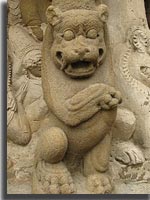
Pallavas territory extended from Northern Odissi to Tanjore and Trichi in far south. They were great conquerors and left a huge impact in the field of art and architecture. The Pallava Dynasty fought many wars with the Chalukyas (to the northwest) and the Pandyas (to the south).
Both of these states -Chalukyas and Pandyas tried their best to stop the Pallavas from rising, but failed. The Pallava Empire continued to live on until the 13th century AD.
Around 14th century A.D, the Pallavas defeated the Ikshvakus and spread their territory as far as the River Krishna.
Administration
Simha Vishnu is the founder of Pallava dynasty and is considered to be a very efficient and strong conqueror. After Simha Vishnu death, his son Mahendravarman (571 - 630 CE ) became the king. He was a very efficient ruler and a learned man. The construction of the famous cave temple at Mahabalipuram was his initiation. However, the tales of prosperity of Pallava dynasty reached far and wide and Chalukya Pulakesi-II learnt about the richness and abundance of the kingdom. Chalukya attacked the kingdom and defeated Mahendravarman.
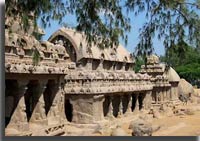
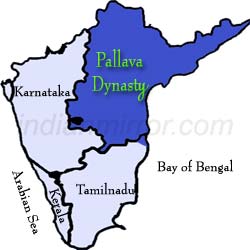
Place |
Chennai, Andhra Pradesh |
Period |
4th to 9th century CE |
Language |
Tamil |
Rulers |
Hinduism |
Religion |
Mahendravarman I, Narasimhavarman I, Nandivarman I, Simhavishnu, Paramesvaravarma I |
Society
The society in south India is more of caste ridden, like that in north India. The Brahmins (priestly class) and Kshatriyas (warrior class) dominated the people belonging to the lower castes. Their position was on the rise as the rulers began to grant land to temples and important priests. Religion played an important part in the life of the people in the kingdom. Hinduism held sway in the kingdom and Vedic sacrificial rights were common.
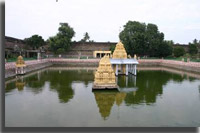
Art
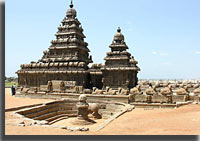
The large rock-cut temples at Mahabalipuram are magnificent examples of the architectural prowess of the artisans of that time. Temple architecture reached its magnificent heigths in ancient India when the Kailashnath temple at Ellora was built in the 8th century.
Culture
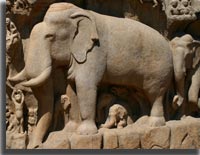
Dancing was used as a form of worship; Siva is depicted in the dance called tandava. The principal hobbies of the prince and princesses of the Pallava Dynasty was painting. The walls of the cave temples gave a partial look into this art form and paint can be seen in traces of rich colors. They Pallava dynasty used vegetable colour so the available colors were few, but they included red, yellow, green, and black.
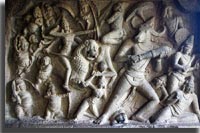
Rise of Rashtrakutas had seen the decline of Pallavas. Vijayalaya the Chola king, completely vanquished Aparajitavarma the last Pallava king in 890 AD.


